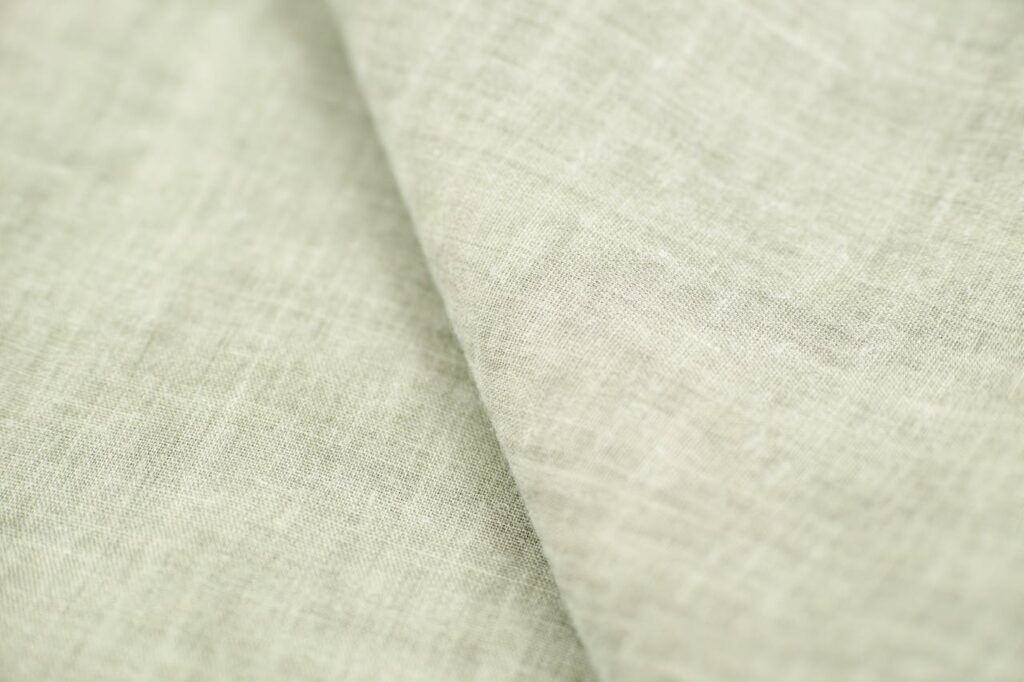Easy Ways to Stop Linen from Creasing When Wearing

Linen is a favorite fabric for hot weather because it is light and lets your skin breathe. But one common problem with linen is that it creases fast. When you wear linen, you might notice it gets lines and wrinkles where you bend the most, like at the elbows, knees, and hips. These creases can make neat clothes look messy. People often choose linen for its comfort and style, but they also want to keep it looking smooth and wrinkle-free as they wear it.
Linen creases because it’s made from the flax plant’s natural fibers, which are stiff and don’t stretch much. When you move, the fabric can’t bounce back like some others, so it folds and creases. This can happen a lot when you first wear linen, but the fabric can become softer and less prone to creasing after you wash and wear it a few times.
To keep linen from creasing too much when you wear it, you can try a few things. First, buy linen that’s blended with another fabric, like cotton, which can help it stay smooth.

Also, before you wear linen, you can iron it with a little steam to help it keep its shape longer. Wearing your linen a bit loose so it can move with you also helps prevent sharp creases.
What is Linen
Linen is a fabric that comes from the flax plant. It has been used to make clothes and other things for a very long time. The fabric is known for being very strong and lasting a long time. It feels cool and light to wear, which is why people like it when the weather is hot. Linen can absorb a lot of moisture without feeling wet, and it also dries fast, which helps keep you dry when you sweat.
People like to wear linen in hot weather because it’s comfortable and helps them stay cool. It’s also a popular choice in fashion because it has a unique look that can be both casual and smart. Linen comes in many styles and is good for all sorts of clothes like shirts, dresses, and pants. The way linen looks and feels, and the way it keeps you cool, makes it a favorite choice for clothes to wear in the summer or in places where it’s warm all the time.Why Does Linen Crease?

Linen creases because it is made from the flax plant’s fibers, which are rigid and don’t stretch. When you bend or sit, the fabric gets folded and those folds turn into creases. Unlike some other fabrics that bounce back when you move, linen keeps these creases because its fibers can’t stretch and return to their original shape.
The flax fibers that make up linen are stiff and strong, which is great for making durable fabric, but not so much for avoiding wrinkles. When you press down on linen, like when you’re sitting, the fibers can’t slide around to adjust to the new shape, so they fold and create a crease. Plus, linen can absorb a lot of water like from humidity or sweat which makes the fibers swell and change shape, leading to more creases.
Another reason linen creases is that it’s often woven looser than other fabrics, which gives it the cool, breathable quality people love. But this loose weave also means there’s more room for the fibers to move and create folds in the material. Despite this, many people still love linen for its natural, earthy feel and the elegance it brings to summer wardrobes, even with a few wrinkles.
How to Stop Linen Creasing When Wearing
Preventing linen from creasing is a challenge because the fabric naturally wrinkles easily. Linen is made from flax plant fibers, which are stiff and don’t stretch much. This means when you wear linen, it tends to fold and crease with your body movements. However, you can take steps to keep your linen clothes looking smoother and less wrinkled throughout the day.
Choose the Right Linen Blend
Wearing a blend of linen with other materials can reduce creasing. Fabrics mixed with linen, like cotton or synthetic fibers, can help the linen keep its shape and resist wrinkles. When you buy linen clothes, look for blends that will give you the benefits of linen but with fewer wrinkles.
Proper Washing and Drying
Wash linen clothes properly to prevent creasing. Use gentle cycles and mild detergent to keep the fibers intact, and don’t overcrowd the washing machine. When drying, avoid high heat, which can make creasing worse. Instead, hang linen clothes to dry naturally, or use a tumble dryer on a low heat setting. Gently stretching the linen out before drying can also help to minimize wrinkles.
Ironing Techniques
Ironing linen when it’s slightly damp can ease out creases. Use a steam iron on the linen setting. Ironing inside out or using a pressing cloth can prevent shiny iron marks. For stubborn creases, a good steam iron can work wonders, relaxing the fibers and smoothing out the fabric.
Storing Linen Properly
Store linen clothes correctly to avoid deep-set wrinkles. Hang them in a cool, dry place, or if you must fold them, do so along the natural seams and lines of the garment. Using padded hangers can also prevent creasing when hanging linen clothing.
Wearing Linen Correctly
When you wear linen, be mindful of how you move and sit. Avoid tight belts or folding linen sharply. Keep in mind that linen is meant to drape naturally, so a looser fit can be both stylish and practical for reducing creases. It’s part of the charm of linen to have a relaxed and natural look, so allowing for a little bit of wrinkling can add to its appeal.
By following these tips, you can enjoy wearing linen without worrying too much about creasing.
Long-Term Care for Linen
Taking care of linen over the long term means treating it right so it stays looking good for years. Linen is a fabric that can last a long time if you care for it properly. This includes how you clean it, how you iron it, and how you store it. Linen gets softer the more you use and wash it, which is one of the nice things about this fabric. But you have to wash and iron it the right way to keep it from getting too wrinkly or damaged.
When you wash linen, do it with care to avoid wearing out the fabric. Use cold water and select a gentle cycle on your washing machine. Avoid bleach, as it can break down linen fibers. Instead, use a mild detergent that’s safe for linen. After washing, don’t wring out linen too hard to get rid of the water. This can twist the fibers and make more wrinkles. It’s best to gently shake out the items and lay them flat or hang them up to dry.
Ironing linen helps keep it smooth and looking its best. If your linen is wrinkled after washing, iron it while it’s still a bit damp. The steam from the iron will help remove the creases.
If you iron linen when it’s dry, use a steam setting or spray it with water. Iron on a medium-hot setting and don’t let the iron sit too long on any spot.
How you store linen can prevent creases and keep it ready to wear. Always hang linen clothing on padded hangers to maintain their shape and reduce creases. If you need to fold your linen, try to follow the seams and lines of the garment to minimize wrinkles.
Do not store linen in plastic bags or boxes as these can trap moisture and cause mildew. Instead, use cool, dry closets that allow the fabric to breathe.
To prevent linen from shrinking or getting damaged, don’t expose it to high heat in the washer or dryer. Always wash in cool water and air dry when possible. If you must use a dryer, choose a low heat and remove the linen while it’s still slightly damp to air dry completely. This care keeps the linen in good condition and prevents shrinking, which can make it harder to iron and wear.
Regular Refreshing
Even when you’re not washing your linen clothes, you can keep them fresh. Hang them in a steamy bathroom while you take a shower; the steam will help remove light wrinkles and odors. You can also use a fabric freshener designed for linen to keep your clothes smelling clean between washes.
Conclusion
Looking after your linen clothes with care will help them last longer and stay looking good. Washing them gently, ironing with care, and storing them properly are key to making sure your linen items stay in great shape. It’s worth taking the extra time to treat your linen well because this fabric gets better with each wash and wear.
